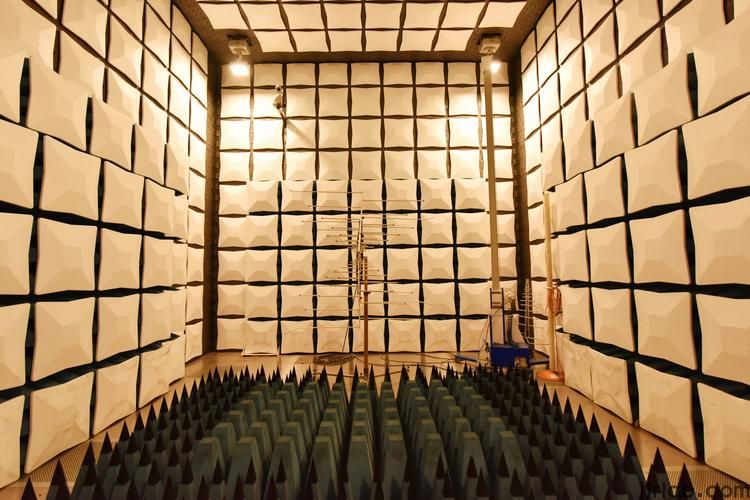
Home Appliance EMC Testing Services
Household appliances primarily generate electromagnetic interference (EMI) from sources such as sparks produced by motors with commutators during operation, as well as actions from mechanical switches, controllers, and protectors.
For example:
- Vacuum cleaners, hairdryers, blenders, and shavers: These appliances contain motors with commutators. The brushes make contact with the commutator, creating sparks and generating EMI.
- Rice cookers, electric irons, electric ovens, and washing machines: These appliances often cause EMI due to frequent switching actions.
- Air conditioners: The large current requiRED for startup causes a temporary voltage drop in the power grid. Inductive loads such as motors can lower the power factor, and power electronic components in inverter air conditioners can produce harmonics.
- Electric fans: The mULti-functional controllers in these appliances, which use silicon-controlled rectifiers, generate high-order harmonic interference.
- Appliances with MICroprocessors: Household devices such as remote-controlled appliances, fully automatic washing machines, electric water heaters, and microwave ovens use two-level digital signals, which can cause electromagnetic interference. As clock frequencies increase, the interference frequency can REACH hundreds of megahertz.
- Microwave ovens and induction cookers: These appliances leak electromagnetic energy, which not only causes interference but also poses potential risks to human health.

EMC Standards for Household Appliances:
- CISPR 14-1 & CISPR 14-2: These are the main electromagnetic compatibility (EMC) standards for household appliances.
- Microwave ovens and induction cookers: These fall under Group 2B for industrial, scientific, and medical (ISM) equipment and must comply with CISPR 11 for their electromagnetic interference characteristics.
EMC Standards in the EU:
- EN 55014-1 & EN 55014-2: These correspond to the EMC standards for household appliances.
- Microwave ovens & induction cookers: These are covered by EN 55011.
EMC Standards in the U.S. Market:
- fcc part 15: This regulation applies to household appliances that fall under the category of unintentional radiators (Unintentional RF Equipment) and must undergo verification.
- fcc part 18: Consumer ISM devices must meet the requirements of FCC Part 18, and the certification can be obtained through either Declaration of Conformity (DOC) or Certification.
Key EMC Standards for Household Appliances:
- CISPR 14-1 / EN 55014-1: Emissions from Household Appliances and Power Tools
- CISPR 14-2 / EN 55014-2: Immunity of Household Appliances and Power Tools
- CISPR 11 / EN 55011: Radio-frequency Interference from ISM Equipment
- en61000-3-2: Harmonic Currents
- EN61000-3-3: Voltage Fluctuations and Flicker Limits
- IEC/EN61000-4-2: Electrostatic Discharge
- IEC/EN61000-4-3: Radio-frequency Electromagnetic Fields
- IEC/EN61000-4-4: Electrical Fast Transients/Burst
- IEC/EN61000-4-5: Surges
- IEC/EN61000-4-6: Conducted Disturbances Induced by RF Fields
- IEC/EN61000-4-11: Voltage Dips, Short Interruptions
- FCC Part 15: Products with Unintentional and Intentional Radiation Sources
- FCC Part 18: ISM Equipment Compliance
Email:hello@jjrlab.com
Write your message here and send it to us
 What Are the Testing Items of California Propositi
What Are the Testing Items of California Propositi
 E-Cigarette EU TPD Testing
E-Cigarette EU TPD Testing
 Testing Certification for E-cigarettes Exported to
Testing Certification for E-cigarettes Exported to
 What is Amazon US CPC Certification?
What is Amazon US CPC Certification?
 UK Toy Safety Regulation Standard EN 71-13
UK Toy Safety Regulation Standard EN 71-13
 What is EU UFI Registration?
What is EU UFI Registration?
 EU UFI Registration for E-cigarette E-liquid
EU UFI Registration for E-cigarette E-liquid
 How to get the MSDS Report for Electronic Cigarett
How to get the MSDS Report for Electronic Cigarett
Leave us a message
24-hour online customer service at any time to respond, so that you worry!




